
Become a member
Join today and help protect nature, beauty and history – for everyone, for ever. Enjoy access to more than 500 places with National Trust membership.
An ancient and atmospheric estate with a medieval garden and historic house
Godolphin Cross, Helston, Cornwall, TR13 9RE
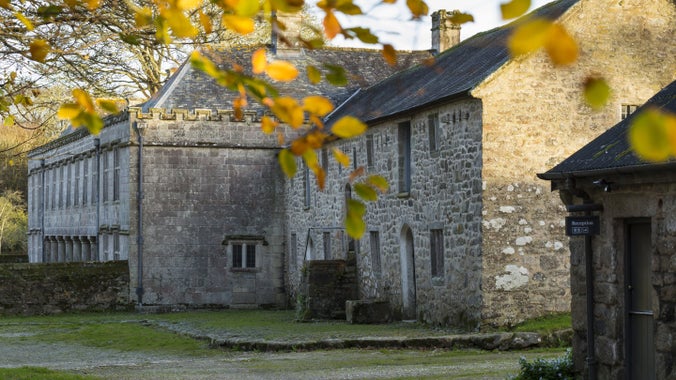
| Asset | Opening time |
|---|---|
| House | Closed |
| Estate | Dawn - Dusk |
| Garden | 10:00 - 16:00 |
| Tea-room | 10:00 - 16:00 |
| Outbuildings | 10:00 - 16:00 |
Last orders in the tea-room are 30 minutes before closing time. Last entry into the house is one hour before closing time.
| Ticket type | With Gift Aid | Without Gift Aid |
|---|---|---|
| Adult (18+) | £14.30 | £13.00 |
| Child (5-17) under 5s free | £7.20 | £6.50 |
| Family (2 Adults and up to 3 children) | £35.80 | £32.50 |
| 1 adult + 3 children | £21.50 | £19.50 |
Second-hand bookshop - generally open from 10-4, but we may not have volunteer cover some days, so if you particularly want to visit the bookshop please call ahead to check.
Please use What3Words to locate to Godolphin carpark: quit.warms.casually. We have three carparks on site, including an accessible car park, which is located at the top of the track, opposite the entrance. Please note the car park payment meters are cash only. National Trust members park for free. All day parking is £5.
Cycle parking is located opposite the Welcome Hut.
Dogs (on short leads) are welcome everywhere within Godolphin’s garden and outbuildings, including the tea-room. Assistance dogs only inside the house and King's Room. Dogs must also be kept on a lead on the farmland of Godolphin estate, including Godolphin Hill, due to livestock grazing. Dogs under close control are also welcome on the wider estate.
Guided tours available on select days. Please call ahead for further information.
The Piggery tea-room offers a range of hot and cold drinks, cakes and sandwiches. There are children's and vegan options available. No hot food offer available. Last orders in the tea-room are 30 minutes before closing time.
Toilets available in the Piggery and listed loos near the orchard. Accessible toilet available in the Piggery.
Uneven terrain with some steep slopes and steps. Accessible parking and drop-off point available. Powered mobility vehicle (Tramper) available to hire. Accessible toilet in Piggery tea-room. Also BSL tours on tablet, easy-read guide, large print guide and visual story available.
Located in the Piggery tea-room.
Accessible parking available for all visitors with accessible requirements. This carpark is located at the top of the entrance driveway.
Induction loops at till points in welcome hut and Piggery. Induction loop facility also available for guided tours.
In the House when open.
Available in the Piggery tea-room and King's Room.
An electric mobility Tramper is available to hire with pre-booking essential via e-mail (godolphin@nationaltrust.org.uk).
There is ramped access to the orchard and to the courtyard.
The terrain at Godolphin is uneven and sloping in places.
British Sign Language Tours on tablet available to hire from the welcome hut.
All terrain wheelchair available to hire from the welcome hut.
Find out more about the events we have planned
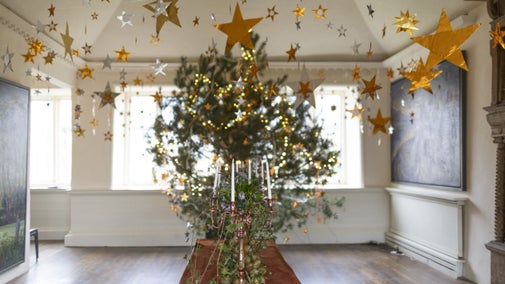
Enjoy a festive visit to Godolphin this Christmas. See the house decorated in its Christmas finery, listen to carol singers and have a go at crafting some Christmas decorations.
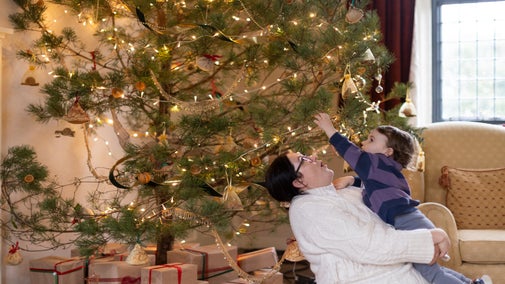
We’re working to make Godolphin a welcoming place for everyone, whether you’re visiting with a dog, without one, or simply here to enjoy the peace and beauty of the countryside. Read more about what we’ve got planned & how you can be part of the project.
Godolphin is a two pawprint rated place. Take a gentle walk around the garden or head up to Godolphin hill for expansive country views. Find out all you need to know to enjoy your time here with your dog.

We have numerous ways to make your visit to Godolphin as accessible as possible. Find out all you need to know here.

Not a member? If you're planning a trip to Cornwall this year, buy a National Trust Explorer Pass to enjoy entry to Godolphin alongside most of the places in our care. With 4-, 8- and 14-day options available, the pass can be tailored to fit your trip. Discover where you can visit with the Explorer Pass and how to buy yours.
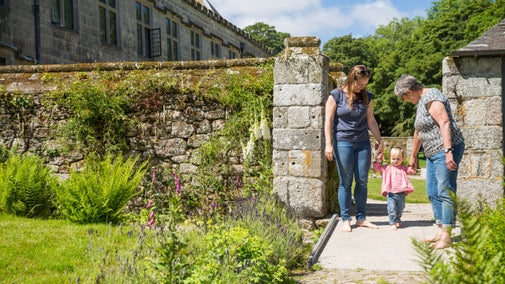
One of Cornwall’s most important medieval gardens on the national Register of Parks and Gardens as Grade II*-listed.
More than 500 acres of countryside, including sheltered woods, river banks and Godolphin hill, all set within a UNESCO World Heritage Site.
Tea-room housed inside the Piggery with original slate stalls. Serving hot and cold drinks, cakes and sandwiches. Last orders are 30 minutes before closing time. No hot food offer available.
Grade I-listed house begun in the late 1400s with later additions. Family wealth hit by recession in the 19th century, resulting in the ghost of a great house you see today. Open to the public for the first week of every month, from the first Saturday to Thursday (except January). See special opening times in run-up to Christmas.
Grade II-listed farm buildings demonstrating the change at Godolphin from a great house to a tenanted farm.
Mary's Wood incorporates barefoot trail, mud pie kitchen and circular stroll.
Bookshop set in the inner courtyard of Godolphin House, with pre-loved books on a range of subjects.
Enjoy a festive visit to Godolphin this Christmas. See the house decorated in its Christmas finery, listen to carol singers and have a go at crafting some Christmas decorations.

Take a look at what family-friendly events and activities we have at Godolphin. Get mucky in the mud-pie kitchen, explore nature up-close with the barefoot trail and enjoy the wide open spaces of nature in the gardens.
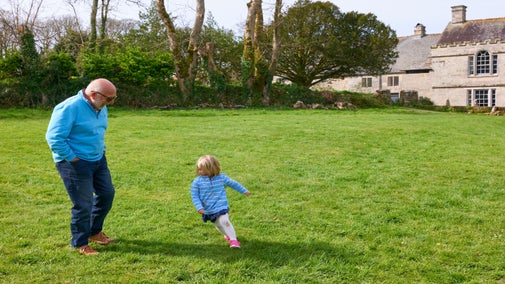
Godolphin’s garden paths provide a natural space that’s rich in history. Find out how the garden provides a home to the native Cornish bee. Explore the orchard, side garden paddock and King’s Garden.
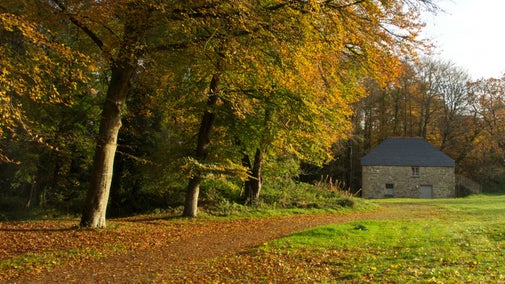
Godolphin House is open to the public for the first week of every month from the first Saturday to the following Thursday, except January. Find out more about when Godolphin House is next open here.

Take a look at what family-friendly events and activities we have at Godolphin. Get mucky in the mud-pie kitchen, explore nature up-close with the barefoot trail and enjoy the wide open spaces of nature in the gardens.

Discover the countryside and find out how a herd of cows can help butterflies to thrive. Take walks with far reaching views across the Cornish coast and discover local legend in this ancient landscape.

No visit to Godolphin is complete without a stop-off in the Piggery tea-room. Enjoy a selection of, sandwiches, cakes, and cream teas which can be accompanied with a good choice of hot and cold drinks. Well-behaved dogs on leads are welcome in the tea-room. Please note that there is no hot food offer available and last orders are 30 minutes before closing time.

Get outdoors and get fit at Godolphin. Take part in our monthly Trust10 running trail and discover the countryside estate at the same time. Suitable for 5k and 10k running abilities.

This gentle ramble up to the top of Godolphin Hill will reward you with some of the most impressive views over West Cornwall you can find.

This circular walking trail takes you through ancient woodland of Godolphin giving you a glimpse into the estates industrial mining past.
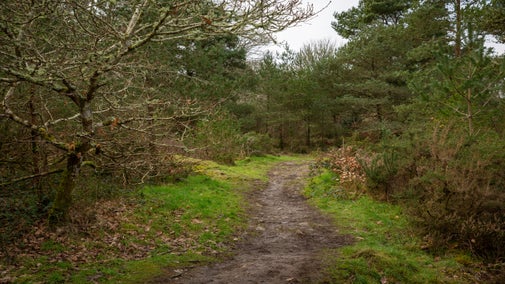
Follow this circular walk beside the River Hayle, and spot the nature and wildlife thriving in an area once heavily mined for tin, source of the Godolphin family's wealth.

Take a walk up Trencrom Hill, not far from Godolphin, for breath-taking views from the top. It's the ideal hill for a quiet walk with a view.


Combining 17th-century luxury with modern décor, this large manor provides a memorable stay.

A sophisticated barn conversion with a timber-frame ceiling and views over Carminowe Creek.
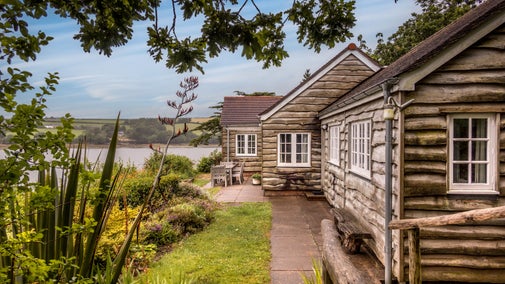
A sophisticated wood cabin with expansive views over Frenchman’s Creek.

A traditional white-washed cottage with a thatched roof and a country rustic interior.
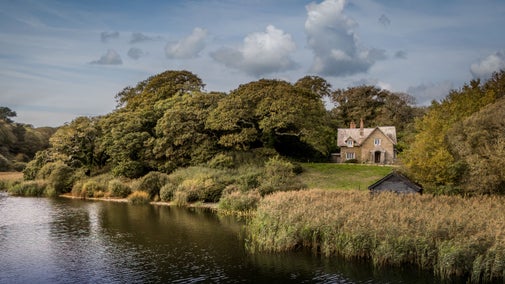
Perching above the Loe, this former gate lodge is the perfect lakeside location.

A lakeside hideaway with a country cottage interior and an enclosed garden.
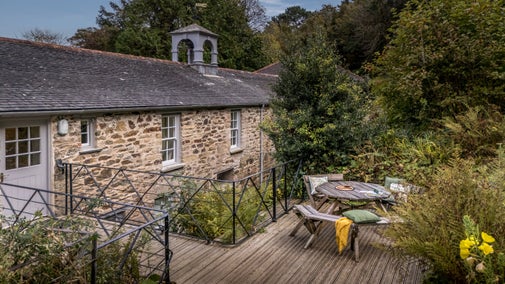
A contemporary apartment in an 18th-century stable block on the Penrose estate.

A stay with a view, this remote hideaway perches just above Loe Bar Beach.
Join the Leach Pottery for a hands-on workshop in Godolphin House, where you'll create a collection of up to four unique ceramic candle holders.
Throughout the festive season, pop on a scarf and some wellies and bring the family to the orchard and Cider House at Godolphin for Christmas-themed activities.
Get ready for the festive season as we open Godolphin House for special Christmas House Experience weekends. Soak up the festive atmosphere with performances from local choirs and see the house trimmed with estate-sourced decorations.
Get outdoors and get fit with the Trust10 running trail through the countryside of Godolphin.
Discover Godolphin, rich in archaeology and wildlife. Travel back in time as you wander around the 16th-century garden, one of the most important historic gardens in Europe.
Explore the wider estate, boasting Leeds engine house and stack, the remains of the Godolphin family mine. Don’t forget to visit Godolphin Hill on the south-westerly reaches of the estate. Here you can breathe in some of the best views in Cornwall looking out over St Ives Bay to the north and the famous St Michael’s Mount to the south.
Disappear into the tranquil and mysterious woodland, where the years of mining have left an unnatural, undulating landscape.
We’re working to make Godolphin a welcoming place for everyone, whether you’re visiting with a dog, without one, or simply here to enjoy the peace and beauty of the countryside. Read more about what we’ve got planned & how you can be part of the project.
From ancient woodland to working farmland, wildlife surveys to tree planting, find out more about the work of the countryside team who work year-round to protect this ancient landscape.
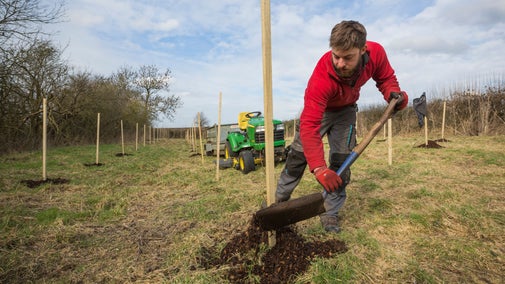
There's a variety of volunteer roles to get involved with at Godolphin. Find out more about which roles are currently available and how you can get involved.

We are working to create 250 hectares of new species rich grassland at National Trust sites across Cornwall. The project, due to be completed by 2026, will help us rise to the twin challenges of biodiversity loss and climate change.
Added to the UNESCO World Heritage list, Godolphin has special status. Find out about the people who lived here and how they created their wealth from the estate.

Explore the objects and works of art we care for at Godolphin on the National Trust Collections website.


Join today and help protect nature, beauty and history – for everyone, for ever. Enjoy access to more than 500 places with National Trust membership.
By sharing your email address you’re agreeing to receive marketing emails from the National Trust and confirm you’re 18 years old or over. Please see our for more information on how we look after your personal data.